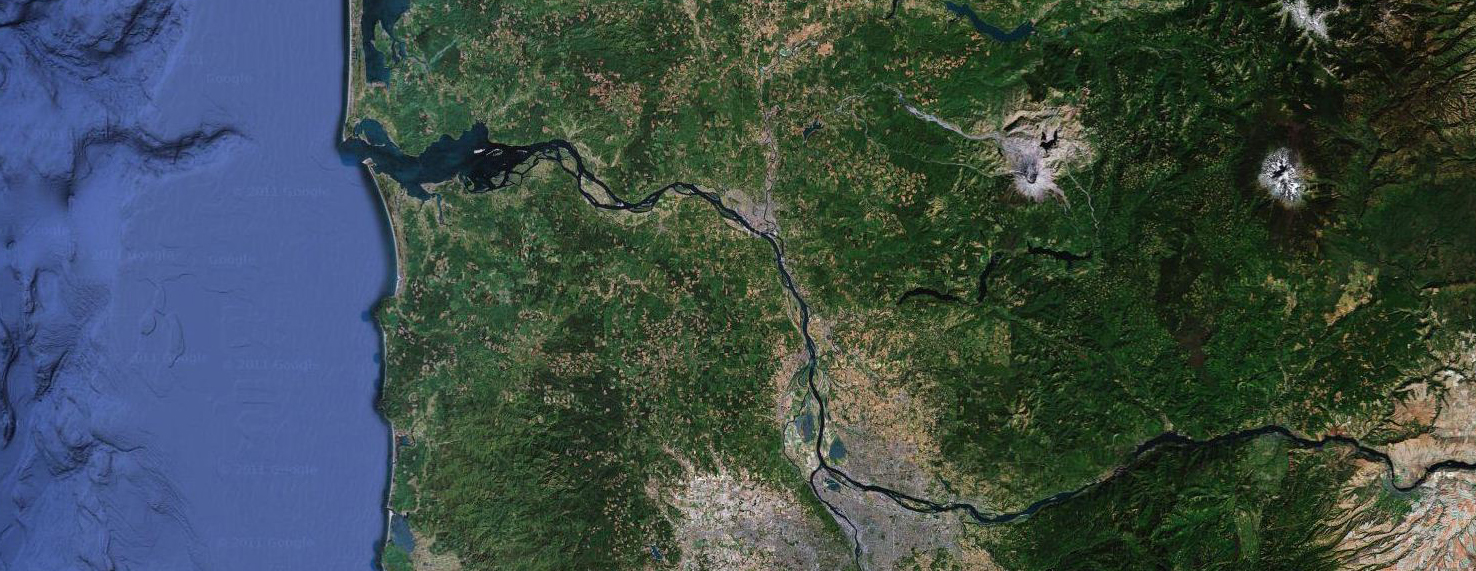Workshop on Tsunami Hydrodynamics in a Large River
To be held at Oregon State University, Corvallis
August 15-16, 2011

Dr. Joseph Zhang and I are preparing for a workshop on tsunami hydrodynamics in the river environment. This workshop will focus on a hypothetical Cascadia Subduction Zone earthquake event: specifically, the problem of tsunami propagation along the Columbia River. We believe the scenario is unique to Pacific Northwest, and important for the evaluation of potential societal and economical impacts in the inland areas along the river. The objective of the workshop is not the prediction of tsunami inundation for a specific town or city. Neither is the model validation workshop's objective: we believe most of the models have already been validated. What we are aiming instead is to identify key physical factors that are important to tsunami hydrodynamics. We would like to ask some of you to simulate this problem, and to present your modeling methodology, procedure, and outcomes at the workshop. Then, based on the results, we discuss hydrodynamics associated with this problem from a variety of aspects.
For example, a video footage of tsunami propagation up a river during the March 11 2011 Tohoku tsunami showed the formation of an undular bore - clearly wave dispersion effect was important for that case. It would be intriguing to examine and discuss the results from some models based on the non-dispersive shallow-water theory, the weakly dispersive shallow-water theory, and even higher-order theory. Tsunami wave breaking in the river environment is also a topic for our discussion - where, when, and in what pattern wave breaking would occur in the Columbia River? Vegetation on the riverbanks and islands could be inundated during the runup, which may play an important role in tsunami effects - the effects of energy dissipation due to heterogeneous and variable roughness depending on the stage. How sensitive such vegetation effects would be? There must be many other interesting and important elements involved in the Columbia River problem.
We plan to split the problem into two: one for the lower (say estuarine) river reach up to the narrow area, and the other for the upper river reach up to the City of Portland (see instructions). The former problem should be analyzed and modeled in 2D, whereas the latter "might" be able to predict with 1D model or hand computations. For the simulations, we provide the boundary conditions at the river mouth and the upstream Bonneville dam. To simplify the problem, we neglect the tidal effects and the land subsidence for the baseline problem. However, the participants are encouraged to examine either the effect of tides or subsidence, and more by performing additional simulations.
- Agenda and presentations
- Instructions for simulating the problem
- Download input bathymetry and topography data
This workshop is sponsored by a grant from Oregon Sea Grant and is open to all researchers. Participants are expected to cover their travel costs. However, a limited amount of funds is available for partial reimbursement of travel expenses of active participants. Tsunami researchers interested in participating in the workshop should contact either Dr. Zhang or myself by June 15, 2011. We thank you for your interest and consideration to participate.
| Harry Yeh
harry@engr.orst.edu School of Civil & Construction Engineering Oregon State University | Y. Joseph Zhang
yinglong@stccmop.org Center for Coastal Margin Observation & Prediction (CMOP) Oregon Health & Science University |